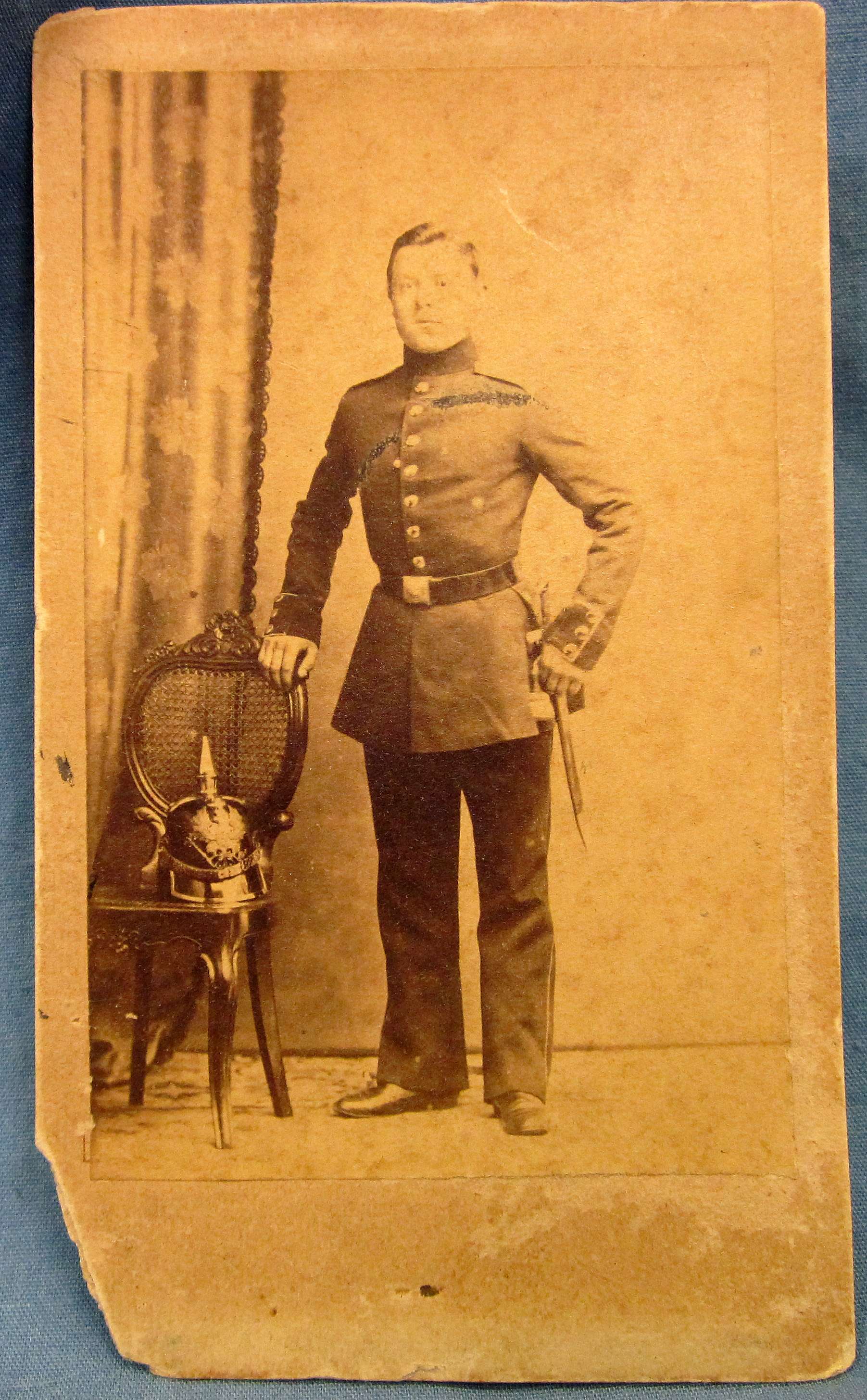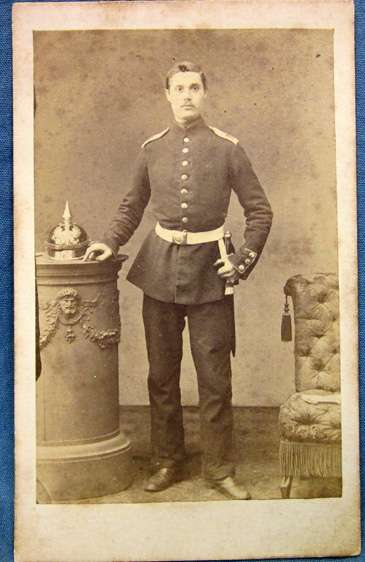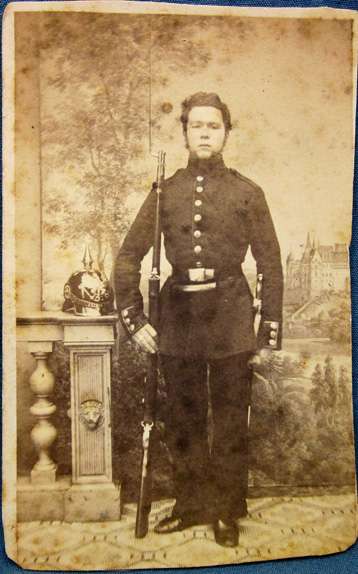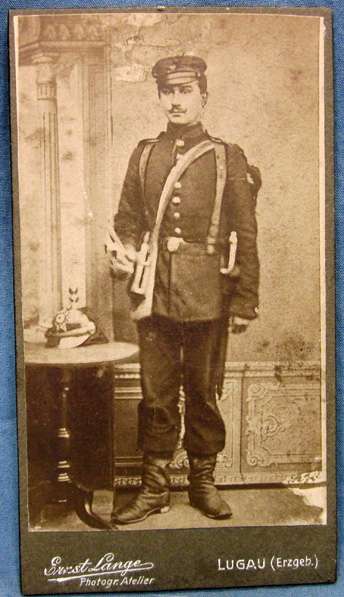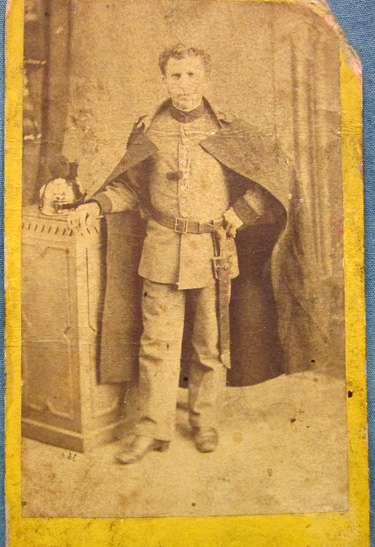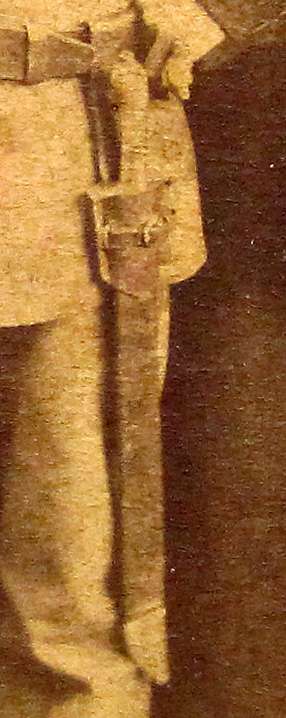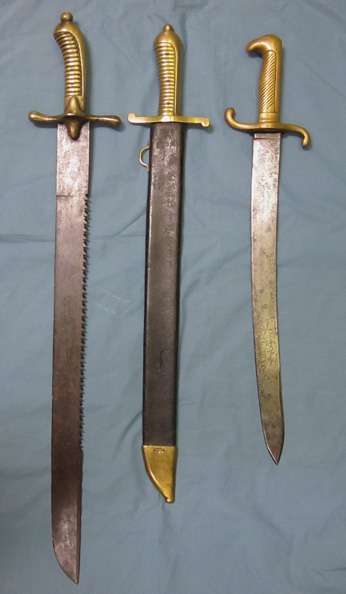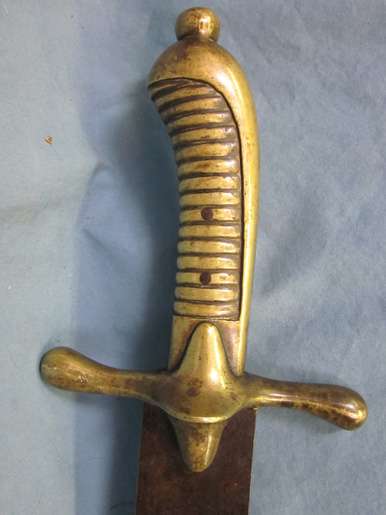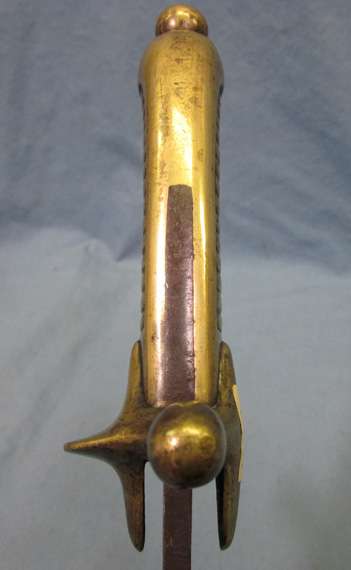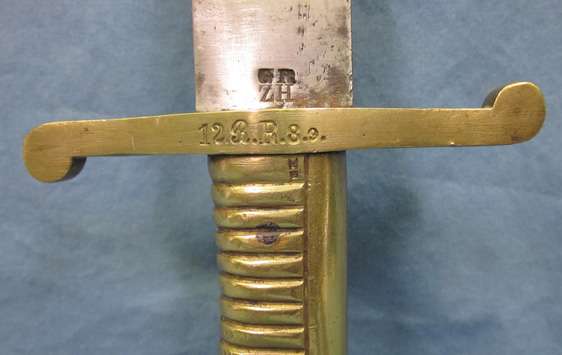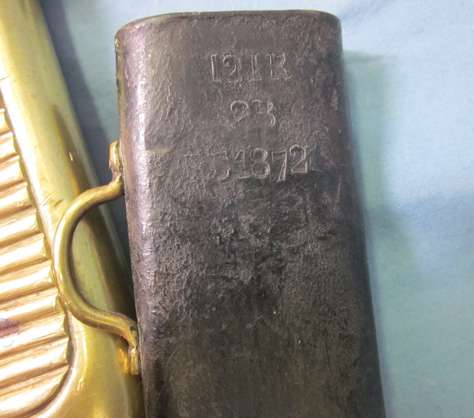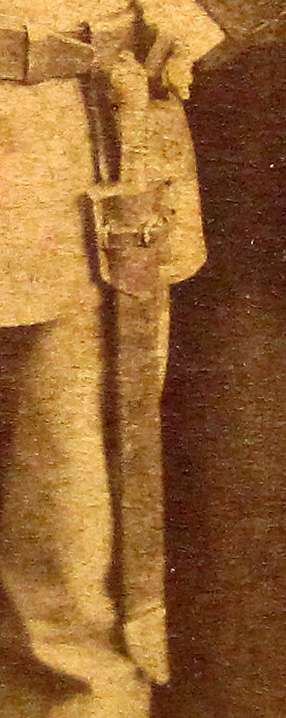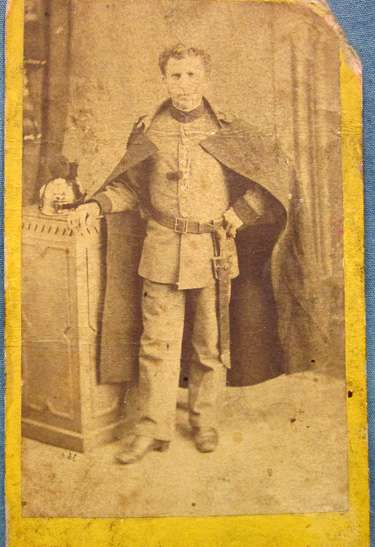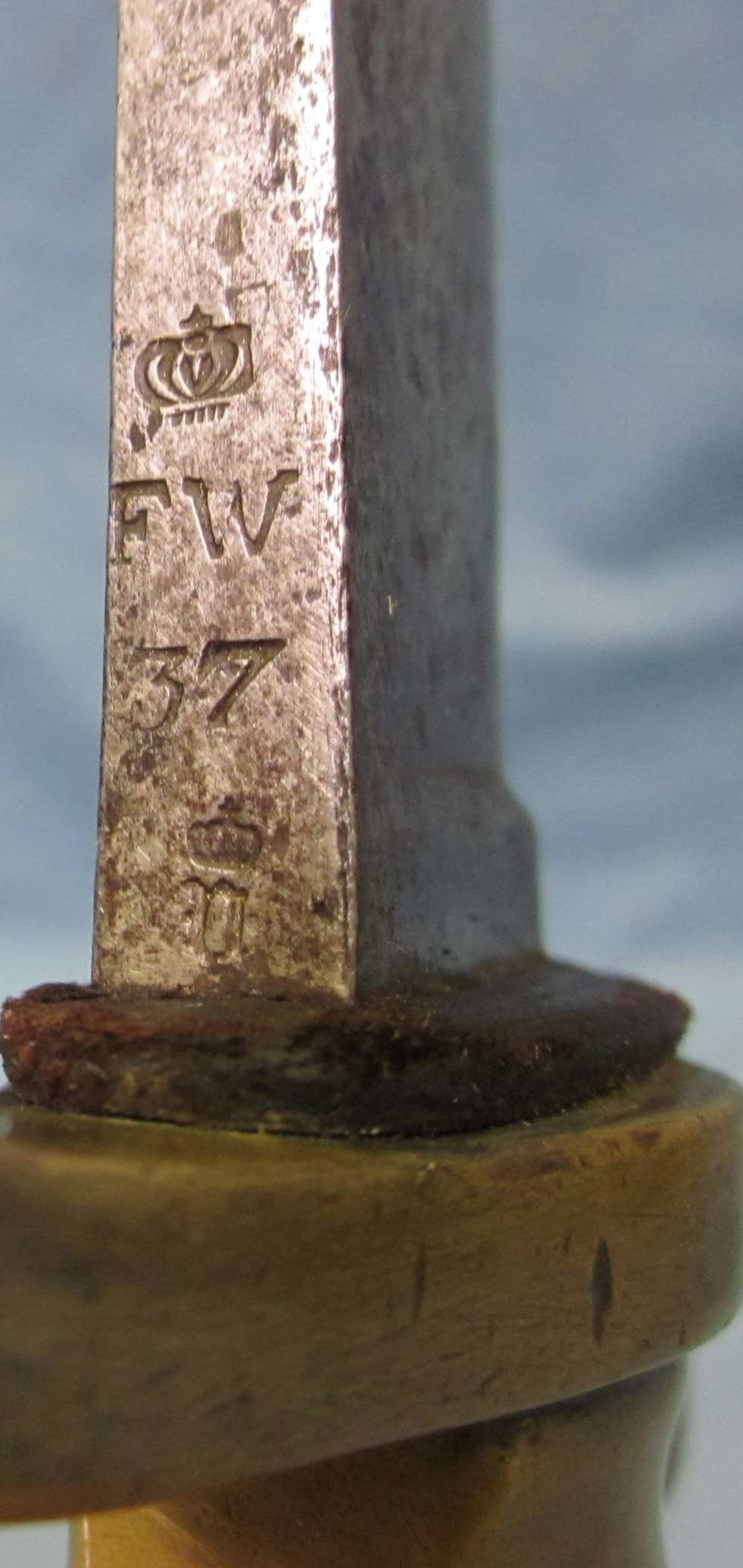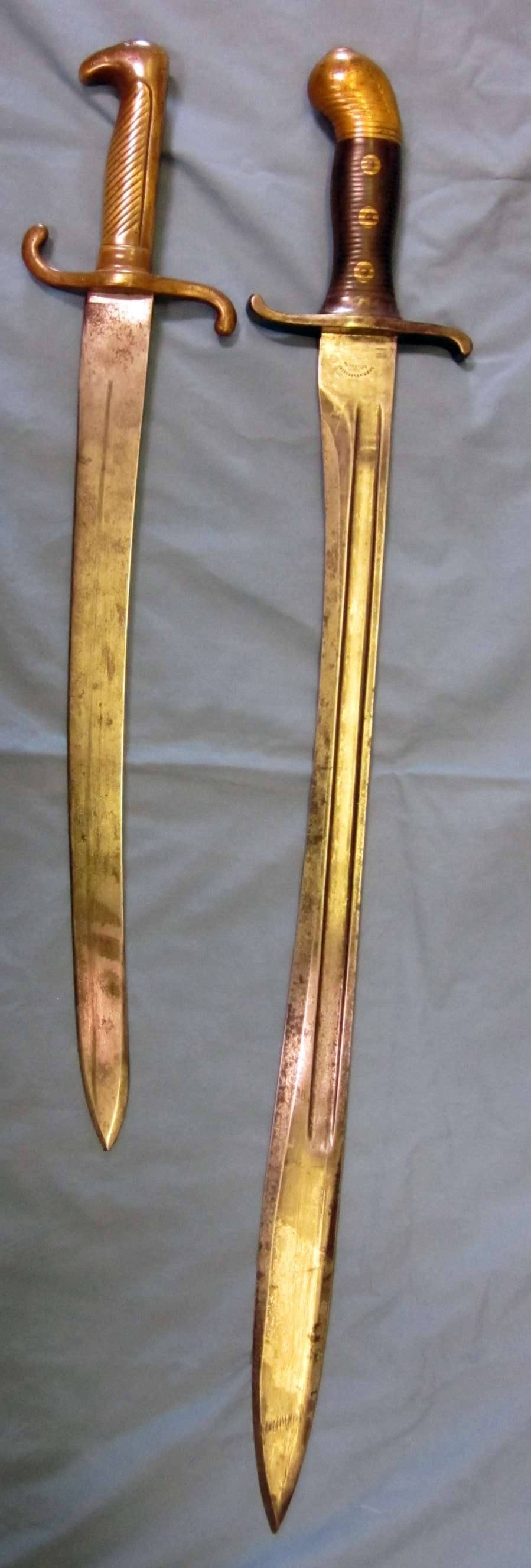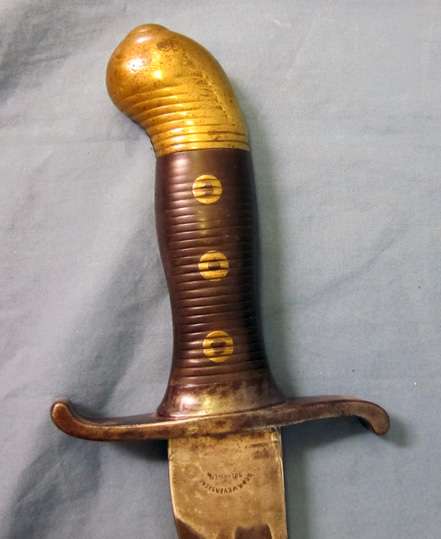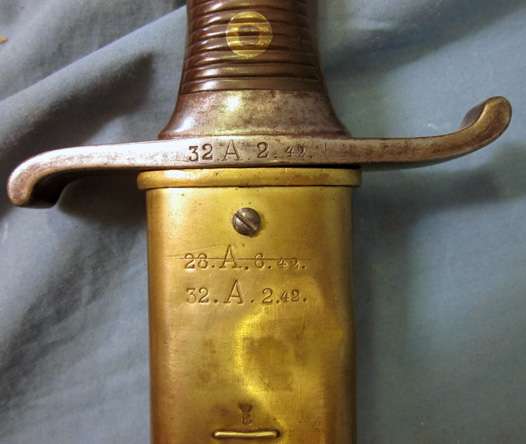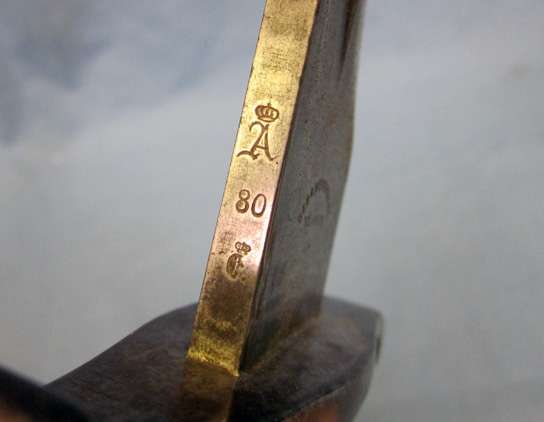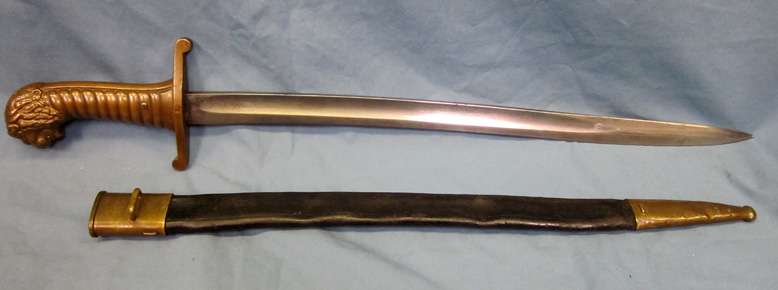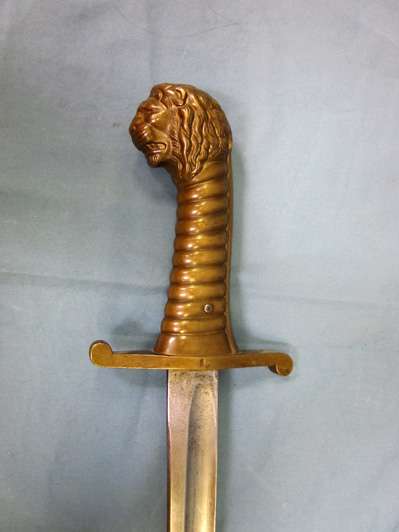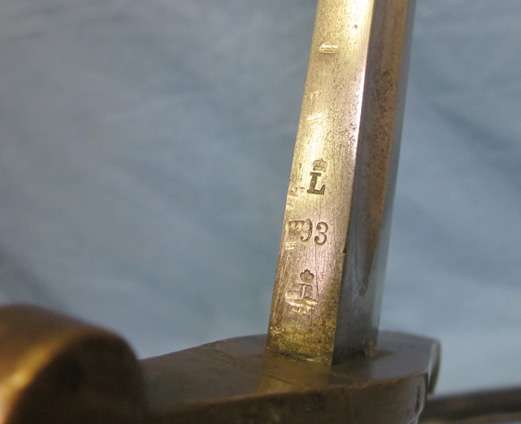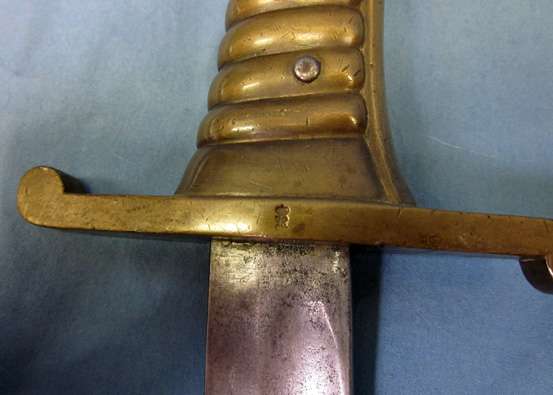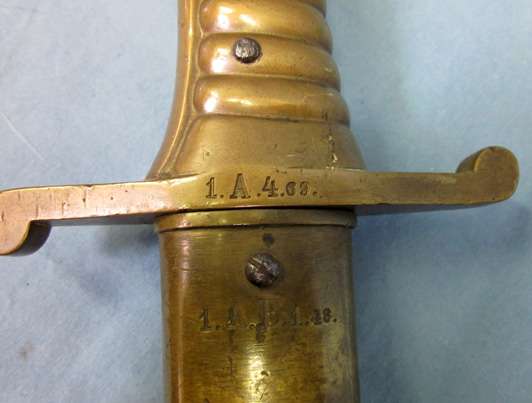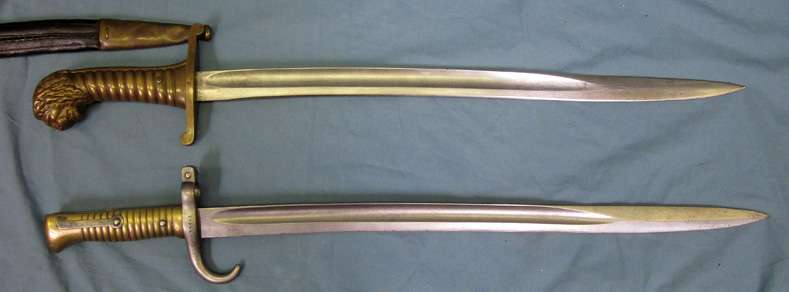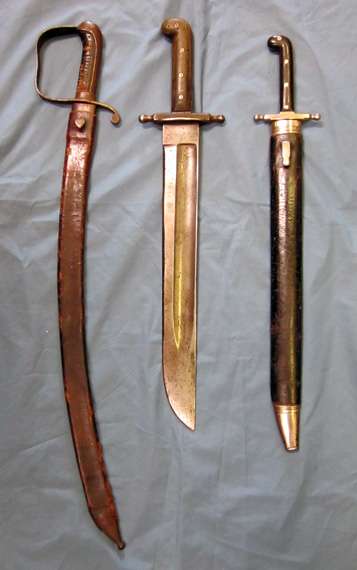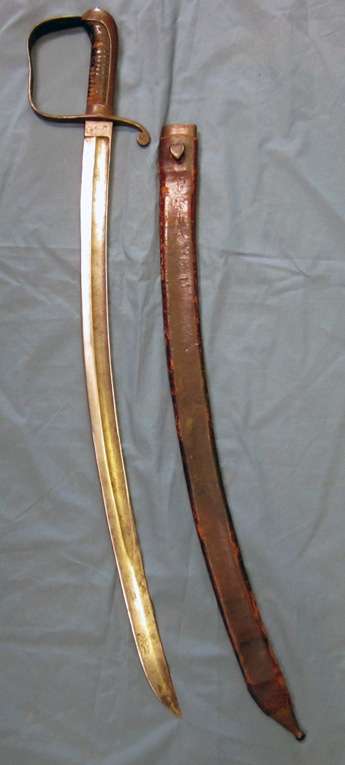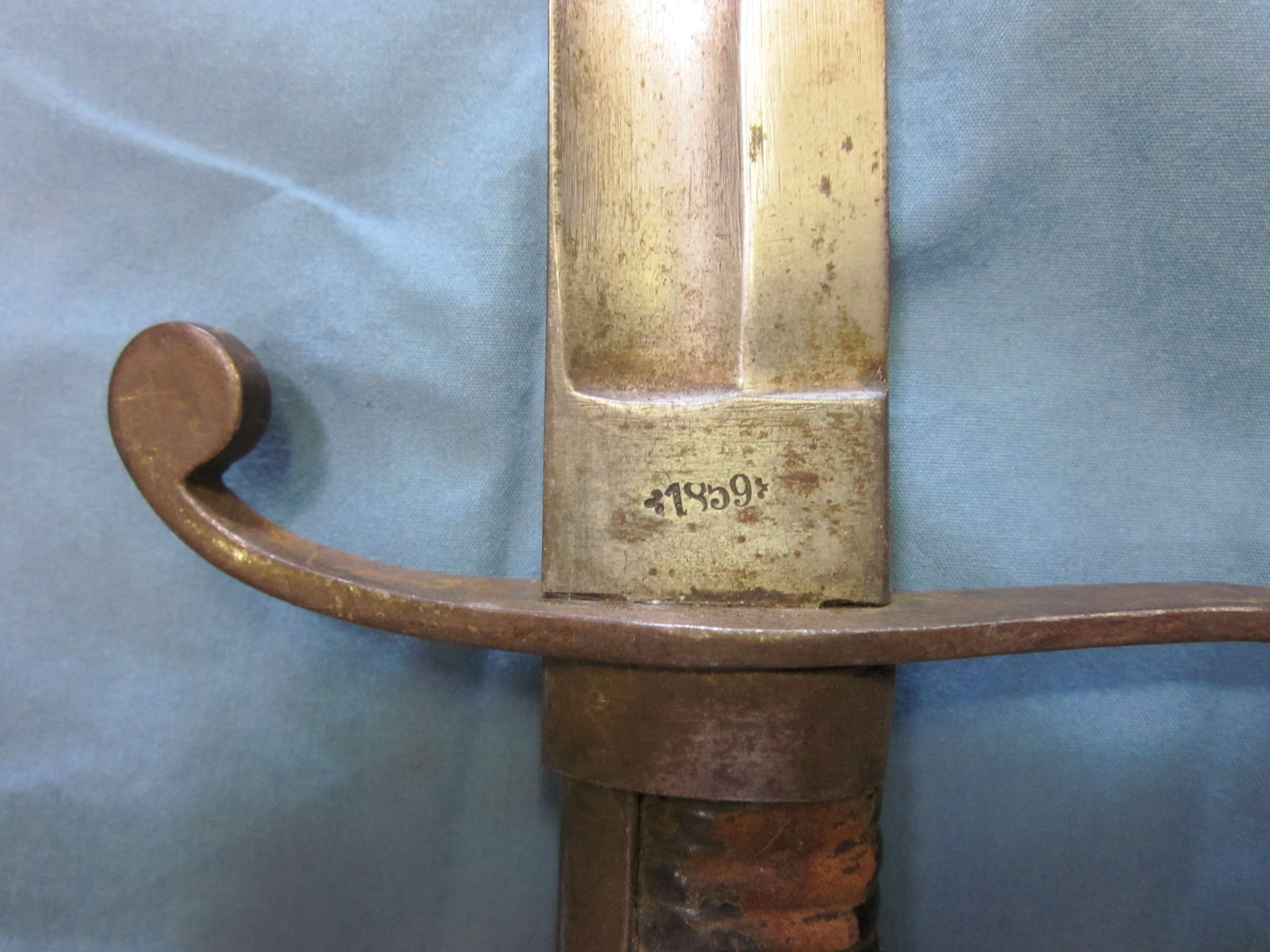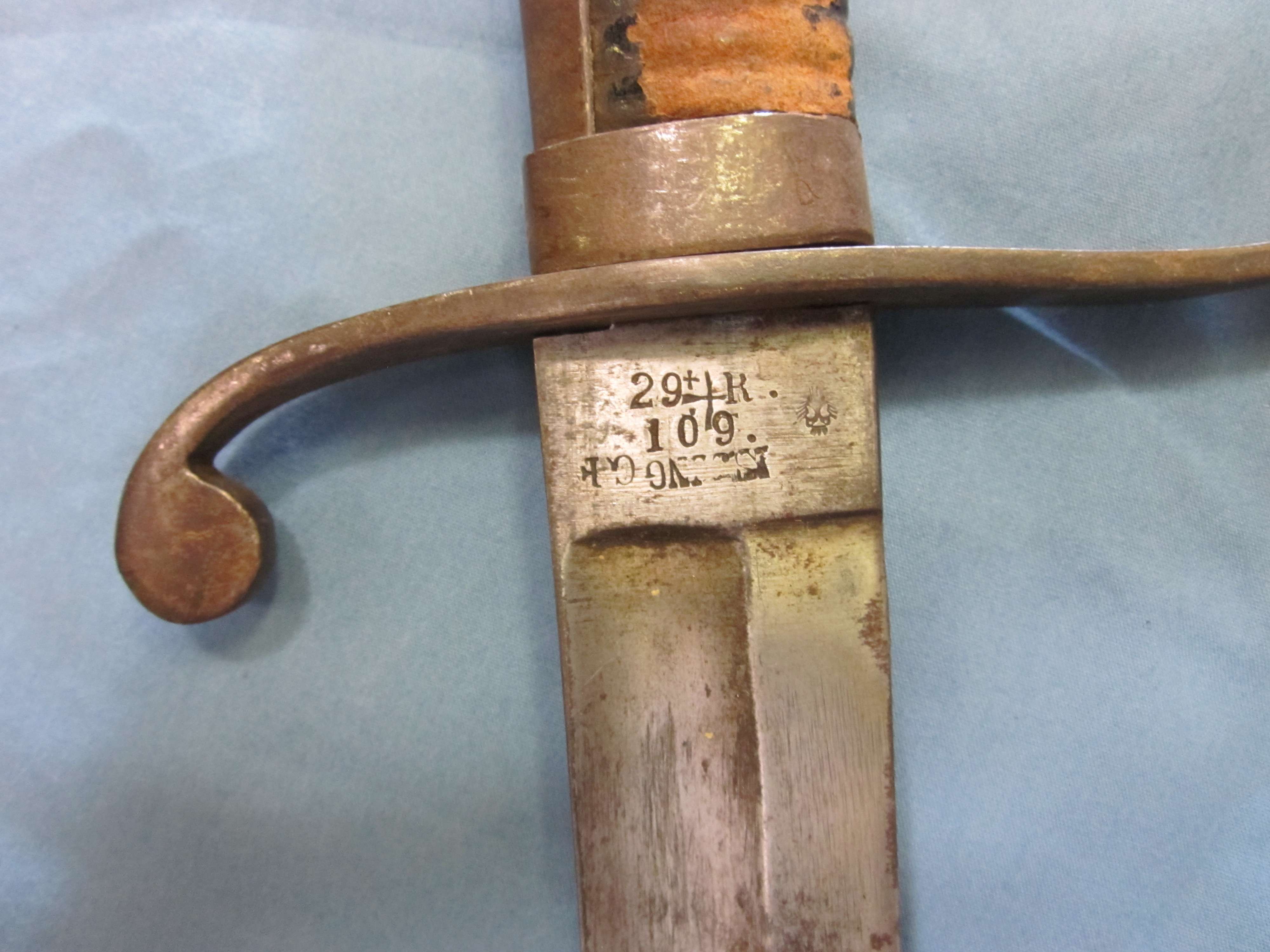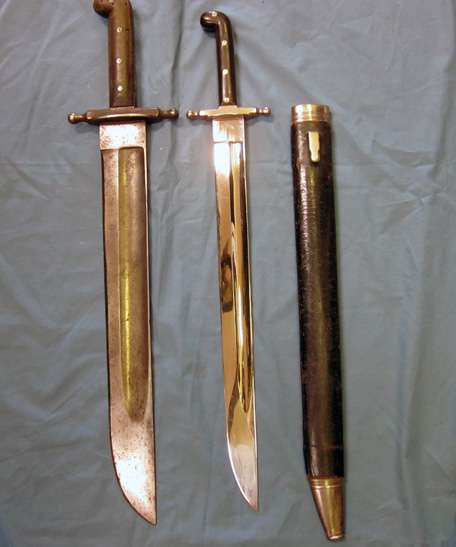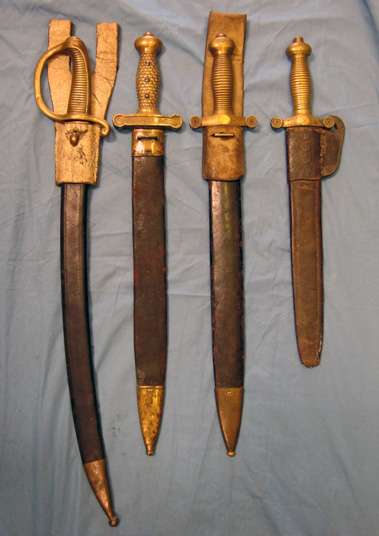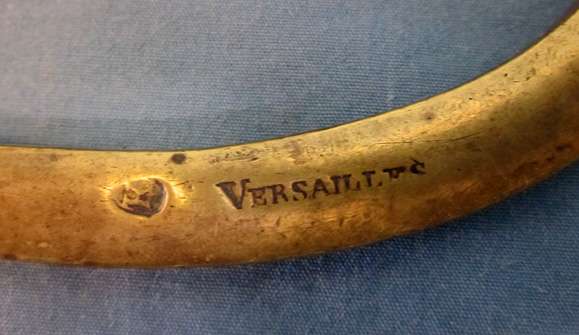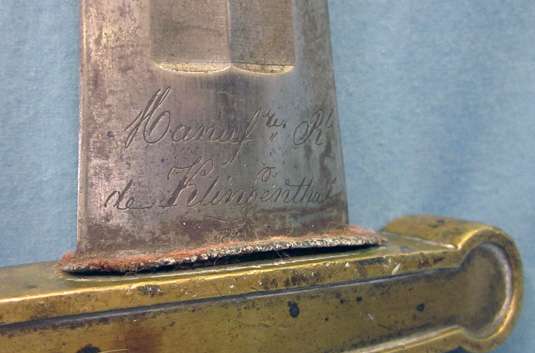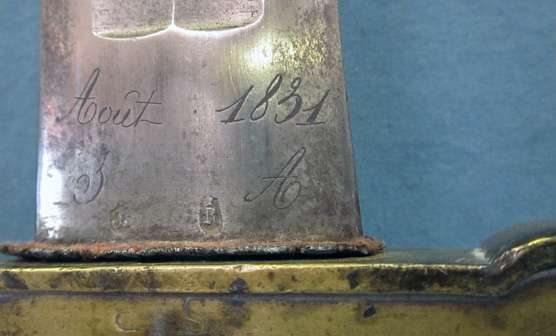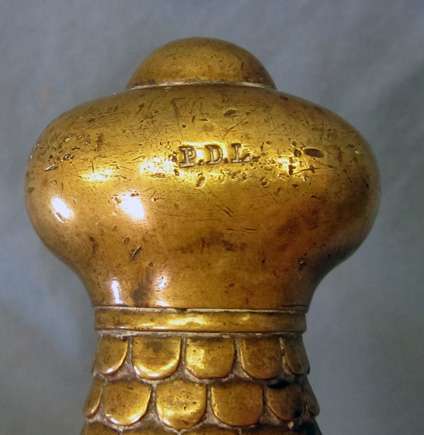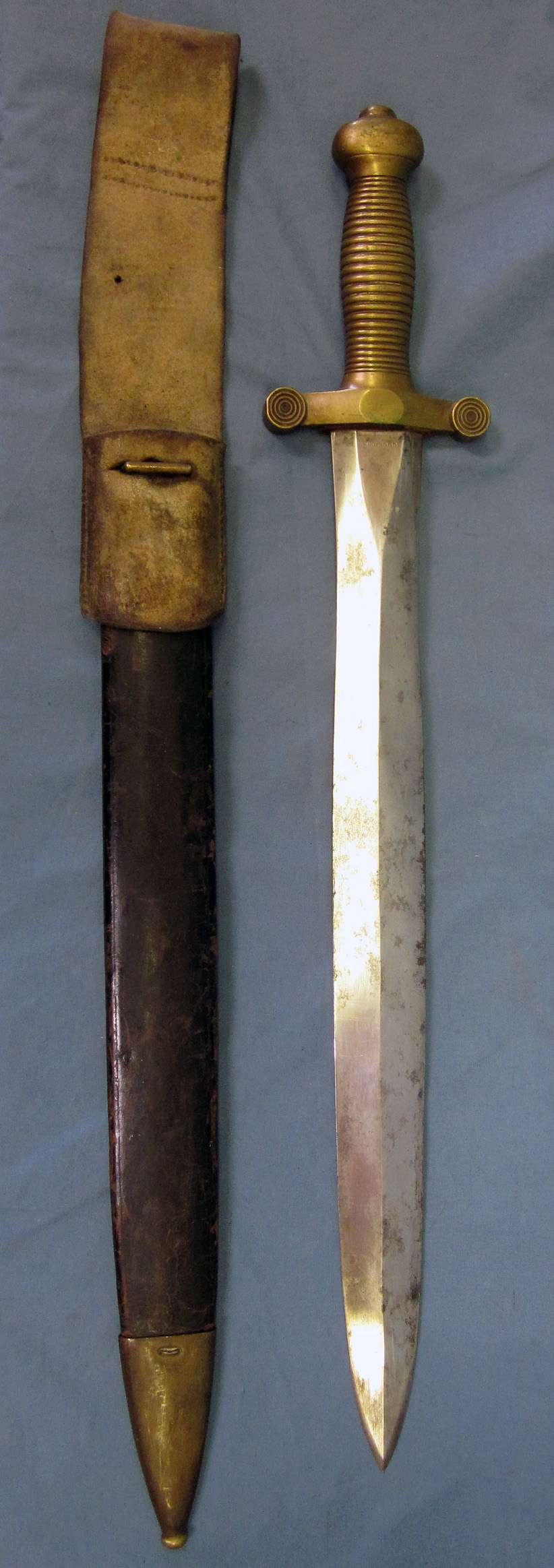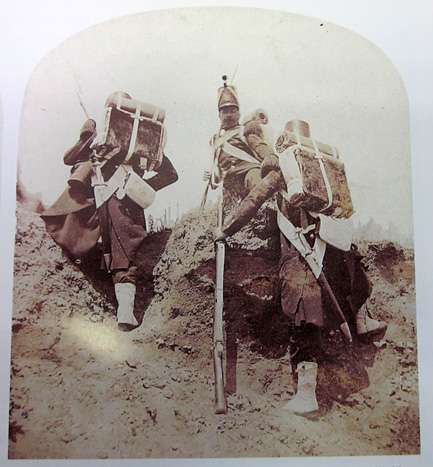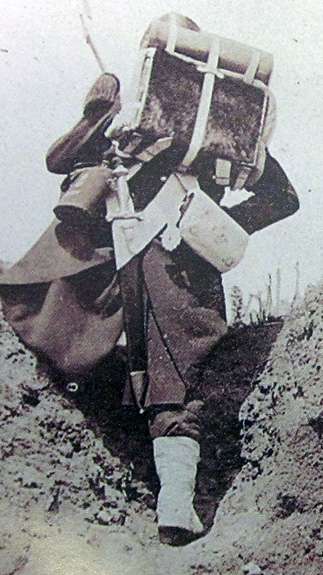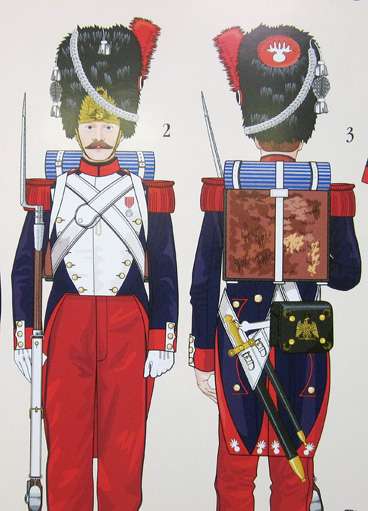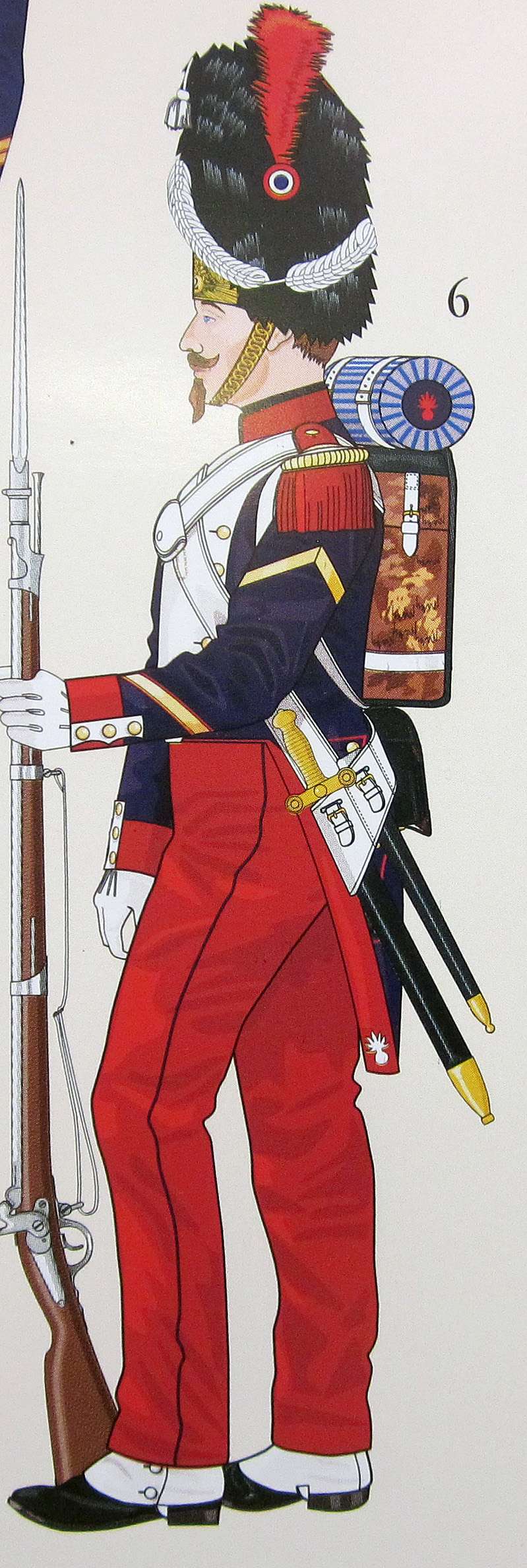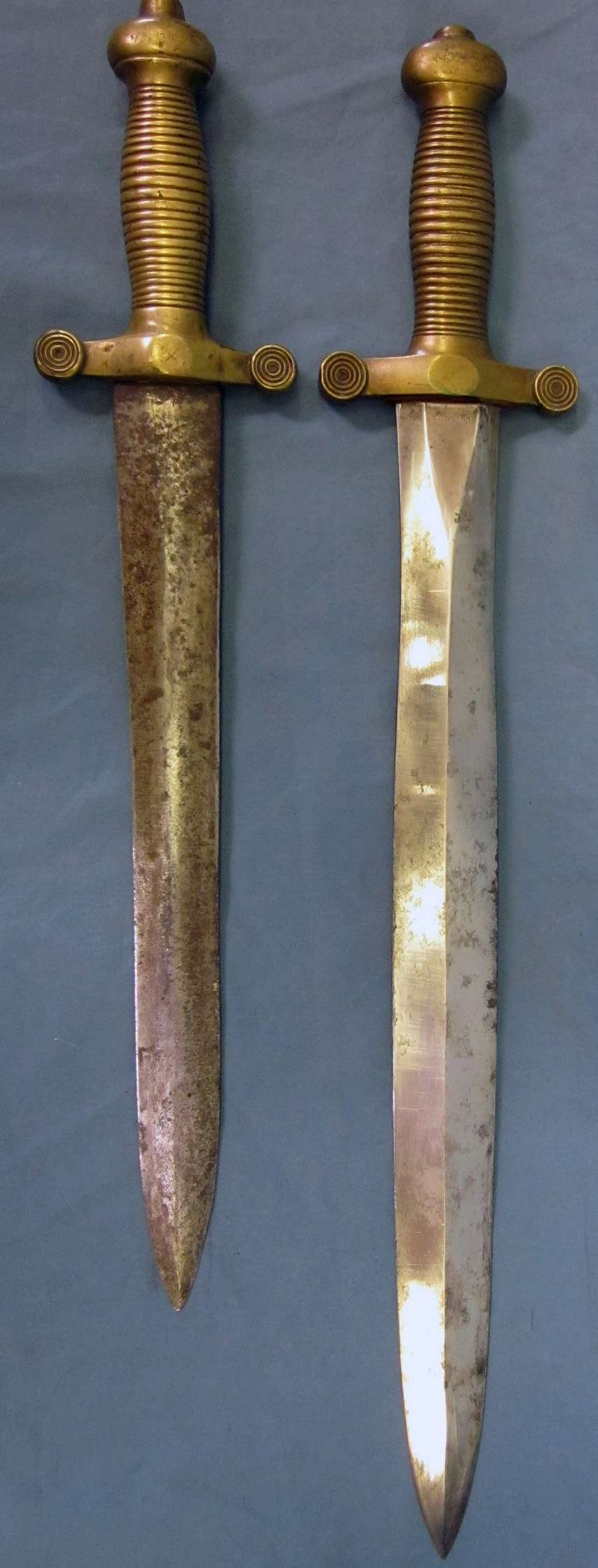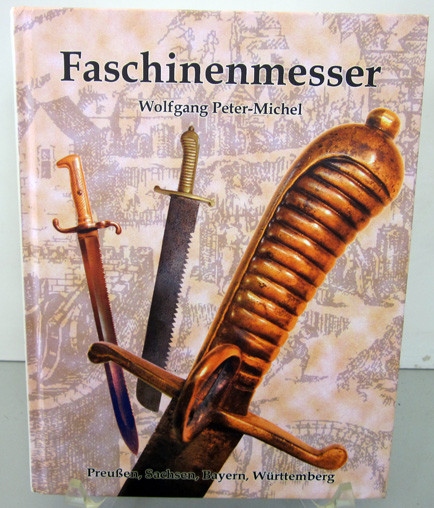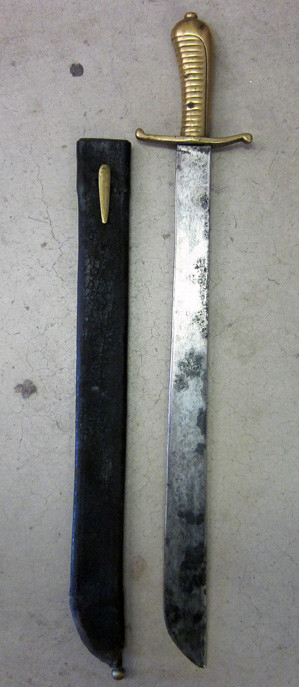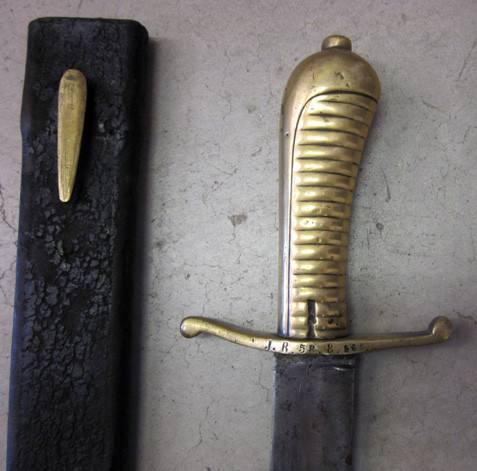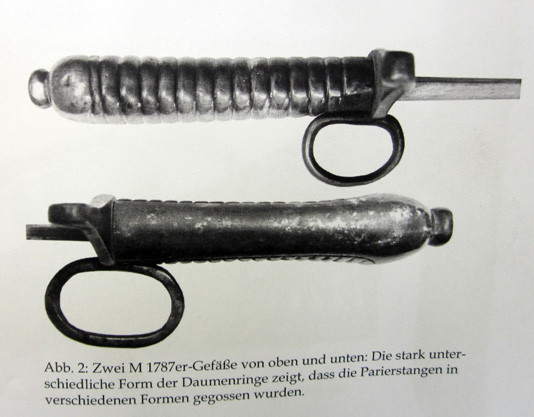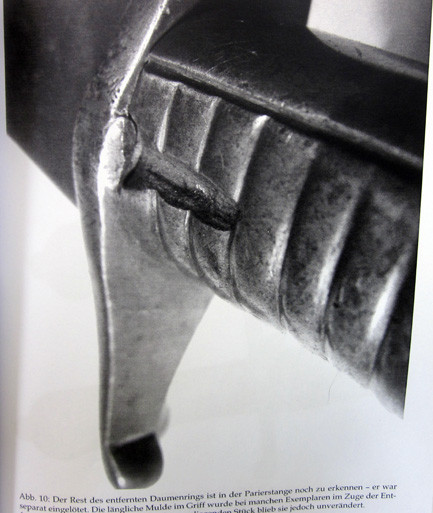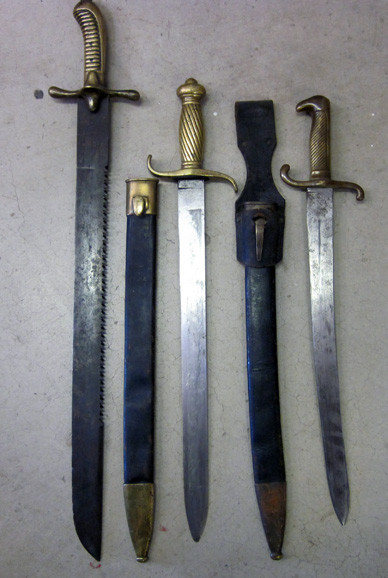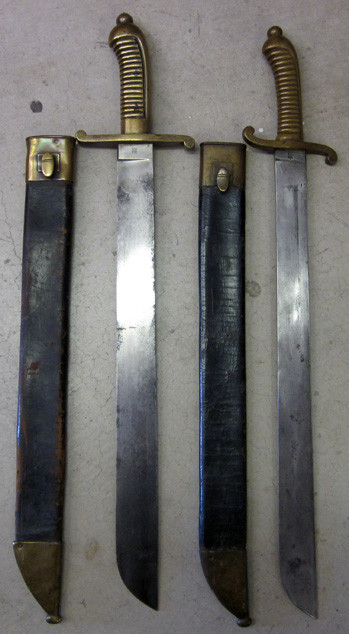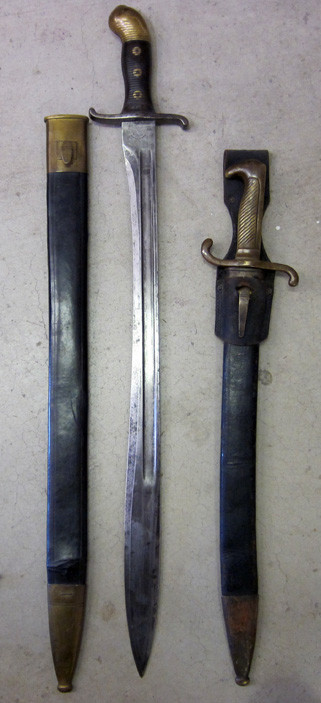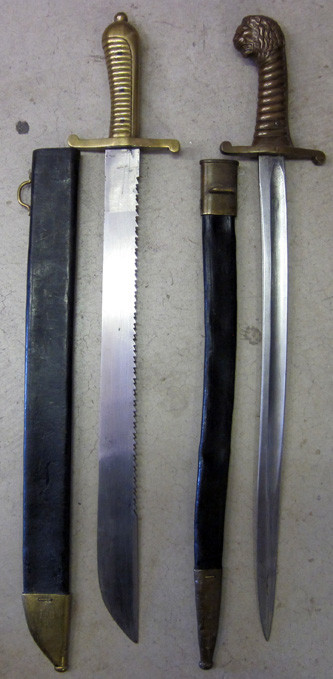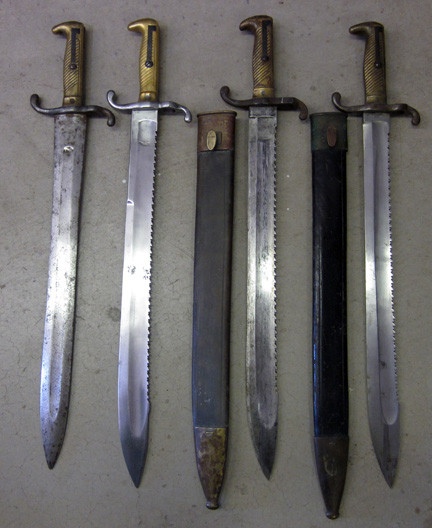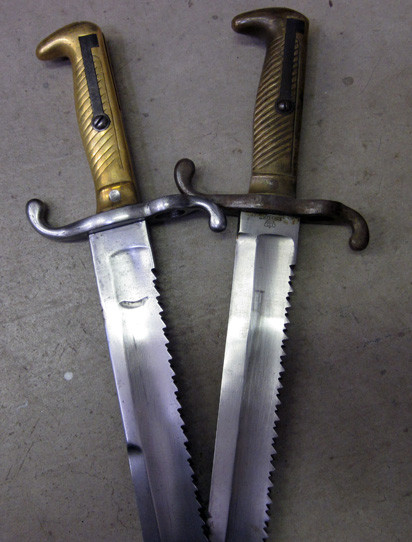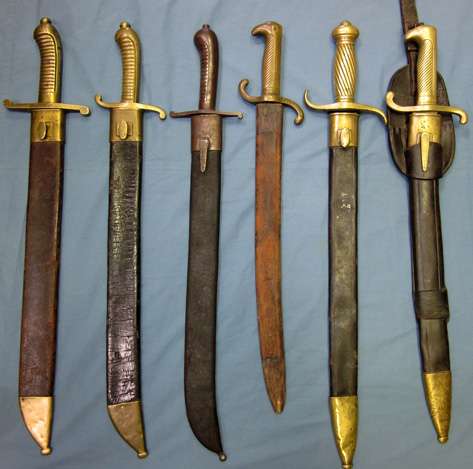
The Faschinenmesser (Fascine Knife) is a metal handled short sword issued to foot troops to be used as a tool for fortification construction, or last ditch personal weapon for protection. The practice of an Infantry edged weapon (beyond the issue socket bayonet) dates back at least to the early 18th Century and an assortment of types were used by many European nations of the era. Developed no doubt as an additional weapon/tool to complement the cumbersome, slow firing, muzzle loading muskets then in universal service. The German states displayed a particular fondness for these sidearms, even after the development and issue of the rapid firing, breech loading Dreyse Zundnadelgewehr in 1841. I believe they remained in general service until the issue of the M1871 Mauser pattern breech loader in 1874. The brass handled sword bayonet, M1871 provided double service use and rendered the Faschinenmesser redundant for general Infantry issue. However, as period photographic evidence provides, many of the ancient Faschinenmesser remained in Imperial arsenals and saw active service with the Kaisers armies up to and including WWI.
Presented for your inspection are five examples of the issue Faschinenmesser as used by foot troops of several German Kingdoms of the mid 19th Century. In my view, these interesting old weapons live in a collectors purgatory of sorts, too short to be a proper sword and no accommodation to fit upon a rifle or musket, they live outside two of the main edged weapon categories sought by collectors today. Nonetheless, at one time weapons similar to these were worn on the belts of soldiers who stood their ground at Mars-La-Tour and advanced up the long slope at St. Privat.
That other patterns exist is a certainty, however these five seem to be (from my observations at collector shows and online sites) are the ones most often encountered today. However, to quote Colonel Joe, “I don’t know, what I don’t know” as I have little available information regarding them in my own library. So Pickelhaube Pals, I ask those of you with more knowledge than I regarding these wonderful old sidearms to help me identify them as to model. Before we have our look, I just want to mention that the type designation means nothing than my listing attempt, certainly done in a random order. In addition the original photographs used, illustrate the difficulty (at least mine thus far) to find a clear photograph of these in wear. The one great exception is of the Bavarian soldier who has proudly hefted his Type 1 around to the front for view. Most often we have to be content with a glimpse of the hilt to determine the pattern the soldier has been issued with.

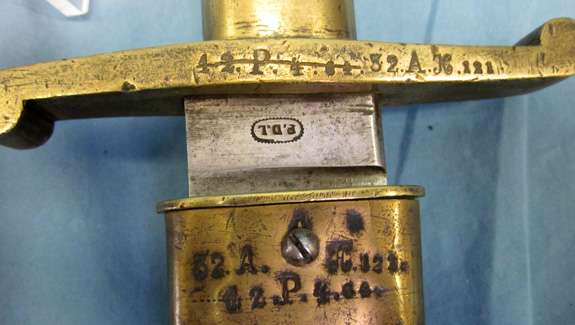
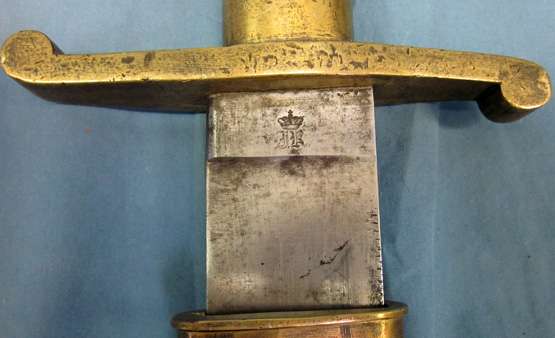
Type 1. This is the most massive of the five being examined. A 19 inch, polished steel blade with a flat edge spine and a machete shaped blade. Weight, 3.2 pounds. Cast brass hilt with a straight guard and a slight S curve to the ends. On the obverse ricasso is the royal Cypher for Friedrich August II, King of Saxony 1836-1854 and on the reverse the makers logo of P.D.L. The blade is well used, showing a poor sharpening attempt, scattered corrosion pitting and a sizable nick in its cutting edge. In spite of these defects, the weapon is interesting in that the two sets of unit markings found on guard and scabbard throat match one another. Most often these weapons are found where the unit markings are mismatched, or worse, not unit marked at all. In this instance, the units displayed are 12.P.64.4 (1st Royal Saxon Pioneer Btln Nr 12, 4th Co. 64th Weapon), a unit founded in 1849. This designation has been lightly struck out, with the second issue stamp being 32.A.H.121. Using Jeff Noll’s book “The Imperial German Regimental Marking” as a guide, this unit may be, 32nd Artillery-Artificer (italicized H) Company or Battalion, 121st weapon. The image of the Saxon Artilleryman shows him wearing this pattern weapon on his belt, note the shape of the guard and hilt.


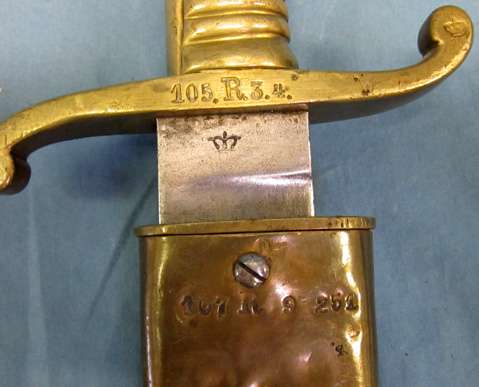
Type 2. In general design this model is quite similar to a Type 1, yet is nearly a pound lighter in weight (2.4 instead of 3.2) with a slightly shorter and less massive blade. Again a cast brass hilt with a more pronounced S curve to the guard. As with Type 1, this weapon is unit marked but to separate regiments. The two Infantry Regiments identified are both Saxon Regiments, the 105th & 107th. Could it be that the more massive weapon was issued to troops most employed in heavier work? Pioneers and Artillery for example and the lighter weight weapons issued to Infantry? In a very unscientific poll (by my observations), it appears that a good deal of the Faschinenmesser of type 1 and 2 seen for sale today generally have Saxon unit markings. Though period photography shows Bavarian troops issued with a similar pattern.

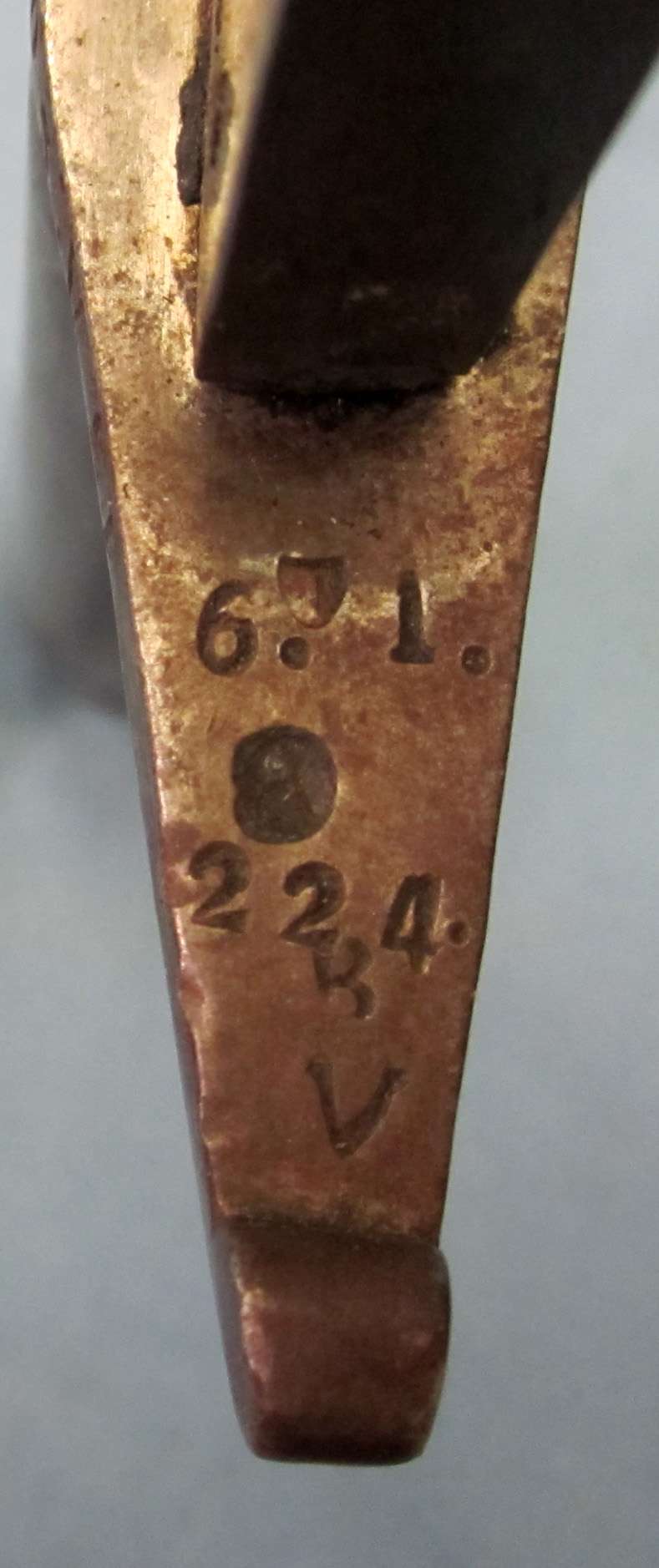

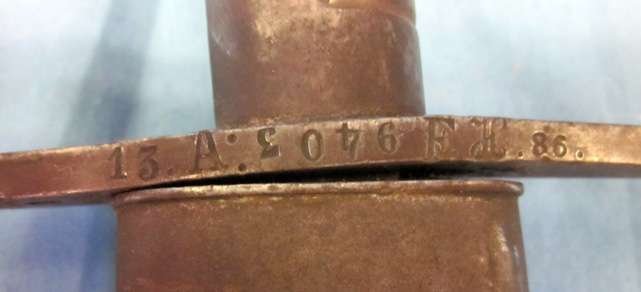
Type 3. The third and final example of this design, is this steel handled Faschinenmesser attributed to the Kingdom of Wurttemberg. The lightest of the three at two pounds even. It features an 18.5 inch polished steel blade with a false edge running 5 inches back from the tip. Its scabbard is also steel mounted and the black leather covering extends over the scabbard end with a steel ball tip finial. It also bears several sets of unit markings. One on the scabbard leather 124.R.1.224 (6th Wurttemberg Infantry Nr.124) and on the steel guard and scabbard stud 13.A.F.H.36 (Handwerker Abteilung des Fuss-Artillerie-Regiments 13). In addition several other numbers can be seen which likely are serial or property numbers. However a stamping found on the guard may be a date of 6.71. Of these three Faschinenmesser, this steel mounted example is the most scarce in my opinion.


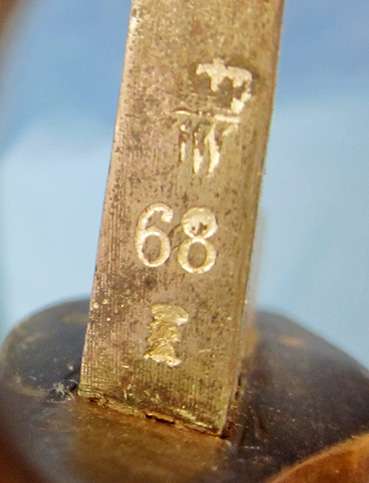

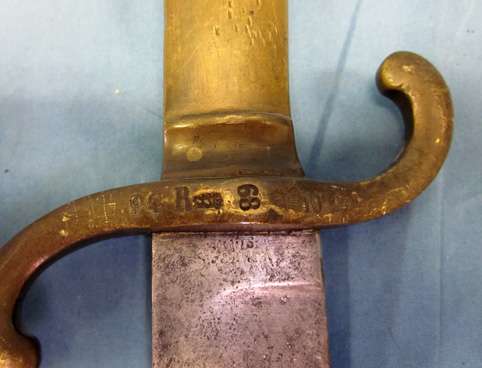
Type 4. This pattern seems to be the most commonly encountered today and I have seen it referred to as the M1864. I also feel it is the last of its type to be adopted by the Imperial Army. The weight is 2.2 pounds, with a slightly curved rather than straight 17 ¼ inch steel blade, cast brass hilt and S-shaped guard. Maker marked V.Jung & S. SUHL on the ricasso. In addition, the guard is unit marked 94.R.10.121 and is Crown FW proofed and dated 68. The scabbard is usually of black leather with a brass throat and chape. Obviously, this scabbard is missing something here, but it is included because the leather body is also Crown FW proofed and dated 67. This blade and this scabbard were together at the time of our purchase.


Type 4a. This is an identical example to the Type 4 faschinenmesser, complete with a properly dressed scabbard with its brass fittings. In addition a unique leather suspension system is shown, used perhaps for mounting onto a horse harness or supply wagon of some sort. This blade is Crown proofed W 72.


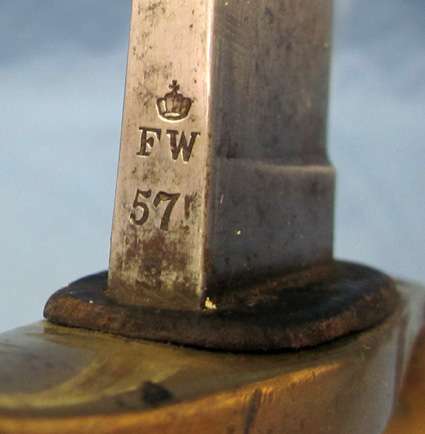
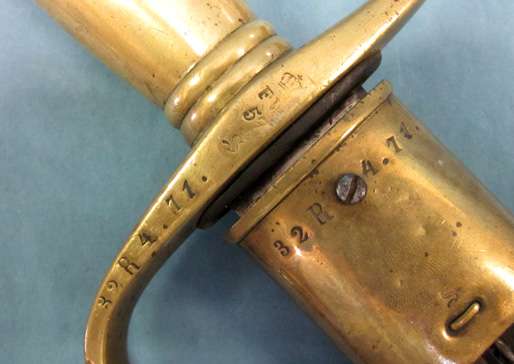
Type 5. The last of our series and the most difficult of the patterns for me to find thus far. Which probably means nothing at all, just my run of collectors luck. This pattern is sometimes seen referred to as the M1849. Weight, 2.2 pounds with a straight 18 ½ inch polished steel blade, cast brass hilt and S-shaped guard. Black leather scabbard with brass trim. Matching unit markings on guard and scabbard throat, 32.R.4.11. In addition, a Crown FW proof and date of 57 can also be clearly seen on the guard and base of the blade spine, Maker marked to S&K.
Cheers....Larmo
